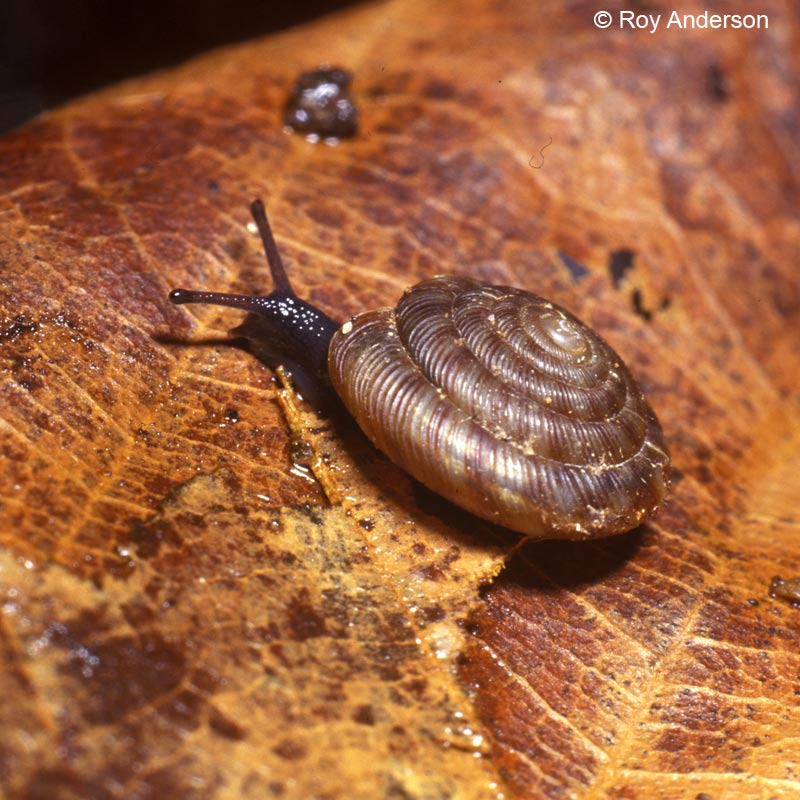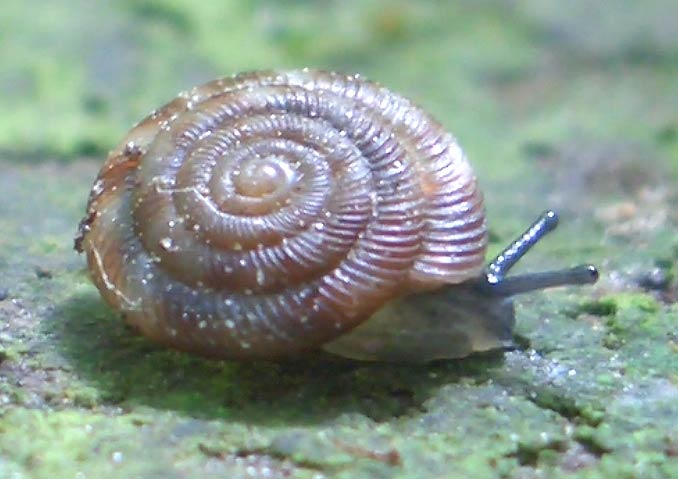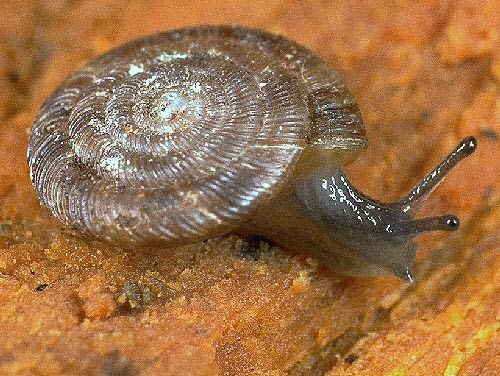Discus rotundatus
|
Discus rotundatus. (Photo: © Dr. Roy Andserson, MolluscIreland) |
|
Discus rotundatus. (Photo: © F.W. Schultes, Wikipedia) |
|
Discus rotundatus. (Photo: © Dr. R.S. Key, Bedale, UK) |
Family
Discidae
Species
Discus rotundatus (Muller, 1774)
Common name
Rotund disc
Description
The rotund disc snail is very small. It is approximately 2.5 mm in heightHeight:
The height of the shell is a measure of the distance between the apex and the most basal part of the shell OR the measurement taken from the apex of the shell to the base, when measured parallel to the axis of the shell.
and ranges in widthWidth:
The width of the shell is the maximum distance across the shell (including the aperture).
from 5.5-7.2 mm, with about 4.5-6 whorlsWhorls:
Pleural of whorl. A whorl is a complete spiral turn/growth of the shell of a mollusc. The whorls are counted from the apex outwards.
. This flattened shellShell:
A hard, inflexible, calcareous or chitinous structure that vary in size and may either completely encasing the animal, covering some part of it or be internal.
is almost disc-shaped and can either be grey or light yellow-brown in color, with prominent uniformly arranged reddish brown blemishes. The body of the animal is blue-grey or blue-black, but pale on the sides of the footFoot:
The muscular organ on the undersurface of the body of a mollusc upon which the animal rests or uses to crawl.
.
Native range
Western and Central Europe
Distribution
North America:
- U.S.: California, New Jersey, New York, Massachusetts, Washington StateState:
The basic component or distinct phase of a Lucid feature or character that can be observed, measured, or otherwise assessed.
- Canada
Atlantic Islands
Europe: Southern Scandinavia, Northern Scotland to Algeria, Spain, Ireland to Ukraine, Turkey, Denmark, Norway
Ecology
This snail inhabits forests, greenhouses, wasteland and gardens. They often lay fewer than 5 eggs per clutch.
Synonyms
- Helix rotundatus Muller, 1774
References
Anderson 2005Anderson 2005:
Anderson, R. 2005. An annotated list of the non-marine Mollusca of Britain and Ireland. Journal of Conchology 38: 607-637.; Grimm et al. 2009Grimm et al. 2009:
Grimm, F.W., R.G. Frosyth, F.W. Scheler and A. Karstad. 2009. Indentifying land snails and slugs in Canada. Introduced species and native genera. Canada Food Inspection Agency. Ottawa, ON. pp. 1-168.; Forsyth 2004Forsyth 2004:
Forsyth, R.G. 2004. Royal BC museum handbook: land snails of British Columbia. Victoria, Canada: Royal BC Museum. pp. 1-188.; Horsák et al. 2004Horsák et al. 2004:
Horsák, M., L. Dvorák and L. Juricková. 2004. Greenhouse gastropods of the Czech Republic: current stage of research. Malacological Newsletter 22: 141-147.; Kerney et al. 1979Kerney et al. 1979:
Kerney, M.P., R.A.D. Cameron and G. Riley. 1979. A field guide to the land snails of Britain and North-west Europe. Collins, London. pp. 288.




